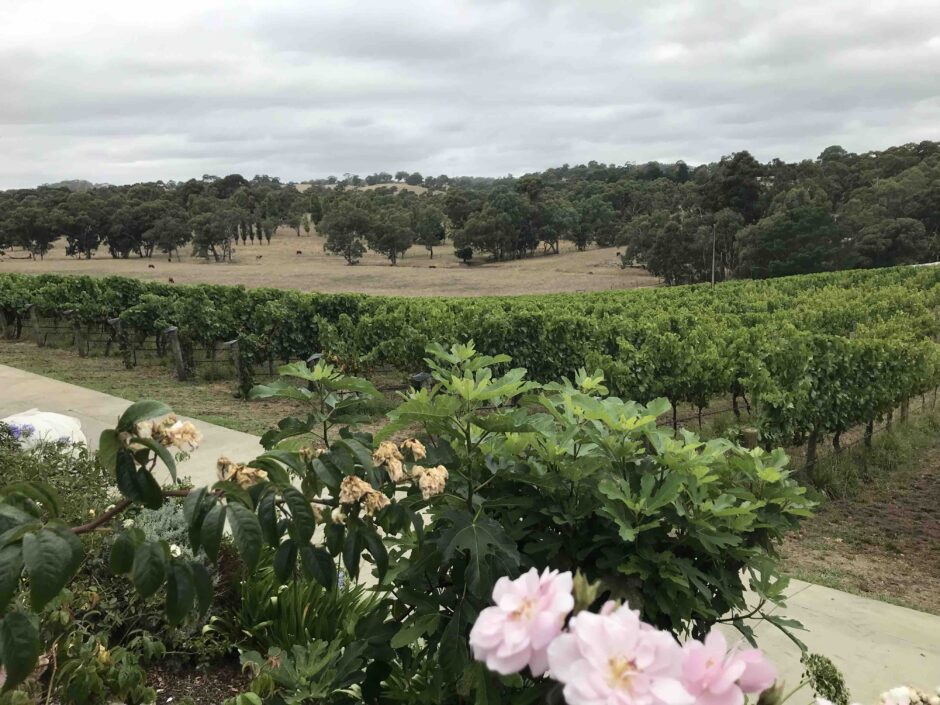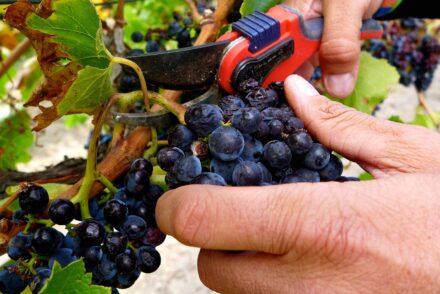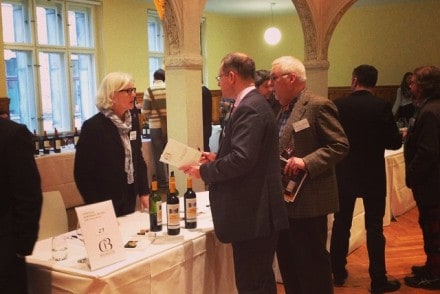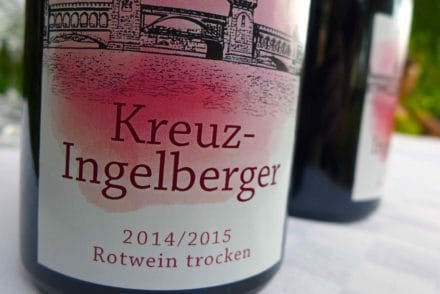Hahndorf Hill Winery is nestled in the beautiful undulating heart of the Adelaide Hills Wine Region, near the historic township of Hahndorf.
This winery is one of my favourite cellar doors in South Australia with its focus on Austrian varietals, appropriately matched to the cooler climate of the region.
Hahndorf Hill was not only instrumental in introducing Gruner Veltliner to the Australian palate, but also the autochthone Austrian red varieties of Blaufrankisch, Zweigelt and Saint Laurent.
I gained a high appreciation for Austrian grape varieties when I was living and working as a somm in Berlin in mid-2015, being able to taste a lot of these wines from some of the best Austrian producers.
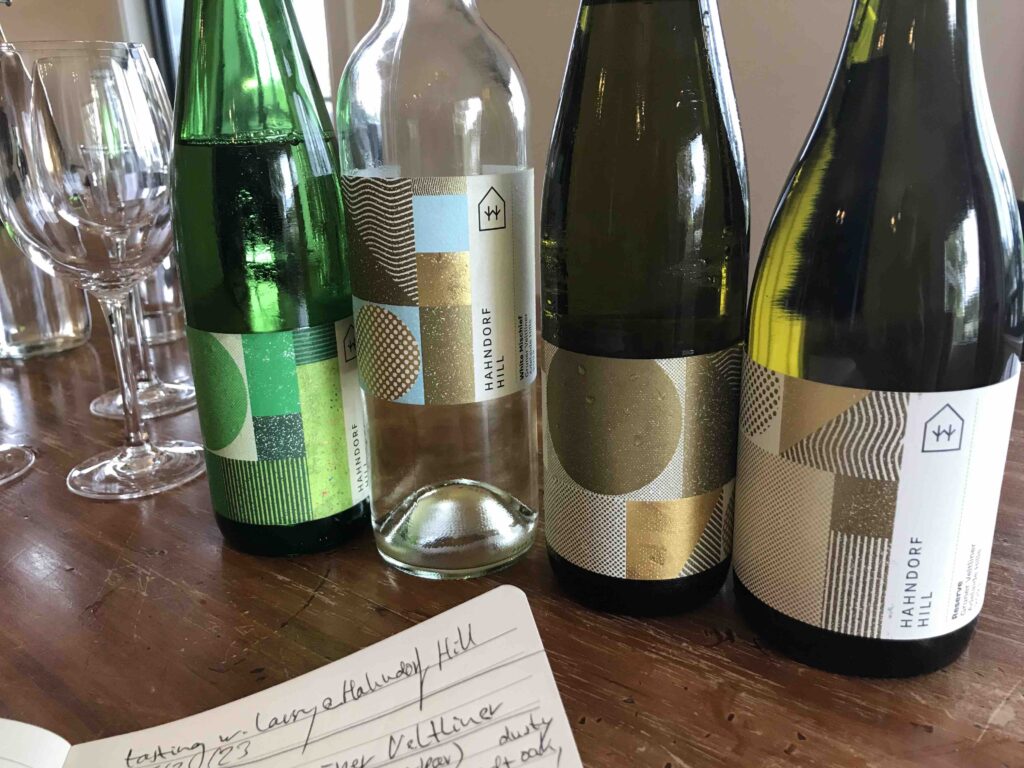
The Hahndorf Winery suite of white wines. Photo: Oliver Budack
Austrian wines are extremely food friendly: the whites are very aromatic with a savoury edge to them. The reds are mostly light-to-medium bodied with softer tannins and a burst of lively acidity.
In short, these are very ‘animating’ wines – heaven for any somm trying to find the right match for a guest’s food choices.
The quality of the Hahndorf Hill wines is outstanding: they are well known for their suite of Gruner Veltliner wines. Visiting their cellar door is a must for me whenever I am near Hahndorf. A while since my last visit, my interest to go again was recently sparked by the release of their 2022 Brother Nature Field Blend, a new wine in their portfolio which I haven’t tasted before.
‘Field blend’ wines are inspired by the Gemischter Satz wines from the Weinviertel DAC, a growing region situated north of Vienna, the Austrian Capital.
By the appellation laws for the Weinviertel, a Gemischter Satz (‘field blend’) must consist of a minimum of 3 different grape varieties, co-planted on the same field or plot.
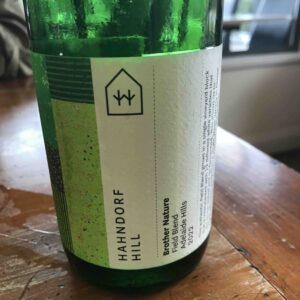
2022 Brother Nature Field Blend Photo: Oliver Budack
Contrary to regular blends, the grapes for field blends are all harvested at the same time and co-fermented together; so they are actually not blended at all. As for a regular blend the individual grape varieties are picked at their individual best ripeness levels and then individual fermented before blended together to create the final wine.
The latter technique of blending separately-fermented parcels of grape juice to a final product allows the winemaker to create a very harmonious blend where they have ultimate control over the wine’s flavour profile.
Field blends are a different story: the practice of interplanting different varieties in the same field goes back centuries.
When agriculture was the main income source for mostly poorer peoples, bad weather events resulting in a poor harvest could have destroyed their livelihoods.
Grape growers didn’t concentrate on planting just one variety in their fields. Inter-planting different varieties however was some kind of ‘insurance’ to balance out any bad weather events, the idea being not all varieties in the same field are affected in the same way.
To spell it out, some varieties ripen earlier, some later, some are more susceptible to diseases, others less… Ultimately a ‘field blend’ was a canny guarantee for more reliable yields instead of just focusing on one grape variety.
Larry Jacobs is the co-owner and winemaker at Hahndorf Hill Winery. Originally hailing from South Africa and the co-founder of famed Mulderbosch winery in Stellenbosch, Larry has taken the concept of field blends one step further.
He says that making a field blend can result in a wine with the purest expression of terroir. It’s not about aiming at creating a ‘perfect’ wine, rather, creating an honest wine – a true reflection of where it came from. This includes not only the geology of the plot but also the weather conditions during the growing season, as well as the viticultural- and winemaking-techniques inherent to the winery.
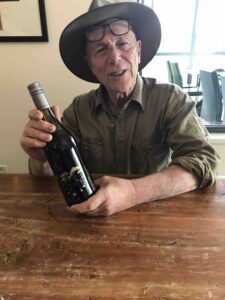
Larry Jacobs, co-owner and winemaker, Hahndorf Hill Winery. Photo: Oliver Budack
The Adelaide Hills can have a significant amount of warm-to-hot days at the end of a growing season, which can result in a loss of acidity in many grape varieties, resulting in a less appealing wine. Taking this into account, Larry mostly planted varieties with natural high acidity – those that have the ability to contain their acidity even during a hotter growing season.
He wanted to make a wine without any additions and applied a minimum intervention approach to express the terroir through his field blend. In his words, ”This blend is therefore truly made within the field, not in the winery”.
When we sat down at the cellar door for a tasting of the Hahndorf Hill portfolio we started with the ‘new kid on the block’, the 2022 Brother Nature Field Blend. It took them 7 years to develop their debut 2022 Field Blend, and my expectations tasting this wine were high: a field blend from the Weinviertel region in Austria is one of my favourite Summer/Seafood wines.
The Hahndorf Hill Brother Nature Field Blend consists of 12 different white varieties, all interplanted within a single vineyard block and co-fermented in the winery.
The blend consists of Harslevelu, Pinot Blanc, Welschriesling, Chenin Blanc, Riesling, Savagnin, Gruner Veltliner, Chardonnay, Sauvignon Blanc, Muscat Blanc, Gewurtztraminer and Muscadelle. This is a truly exciting mix of varietals, all planted for different reasons – some for contributing acidity to the wine; others for their colour and texture (phenolics).
On first sight the wine was almost a white-to-pale-yellow colour in the glass. On first sniff it came across lively and fresh with aromas of lime and smoky minerality.
And on the palate – strap yourself in! The wine bursts into citrus aromas, paired with green apple and slightly unripe white stone fruit, so refreshing!
This was all held together by a subtle core of slatey minerality, giving the wine a slight austere finish. The vineyard’s geology is certainly a contributing factor, where under a layer of red clay soil there is metamorphic rock, featuring a mixture of slate, schist and quartz.
The mouthfeel was delightful with a hint of phenolics balancing the intense acidity, leading into a long finish.
I immediately craved at least half a dozen oysters or some fresh seafood from the grill. This is a wine definitely made for the hotter climes of South Australia, to complement summer salads or spicier cuisine.
Or you could just drink it on its own, sitting on your deck or at the beach, to embrace this truly unique wine with it’s wild heart.
The 2022 Hahndorf Hill Brother Nature Field Blend marked only the beginning of my tasting with Larry – there were several more, so stay tuned for another blogpost on tasting the remaining portfolio of Hahndorf Hill.
A big thank you to Larry who was super-generous with his time, his conversation as insightful as it was engaging…
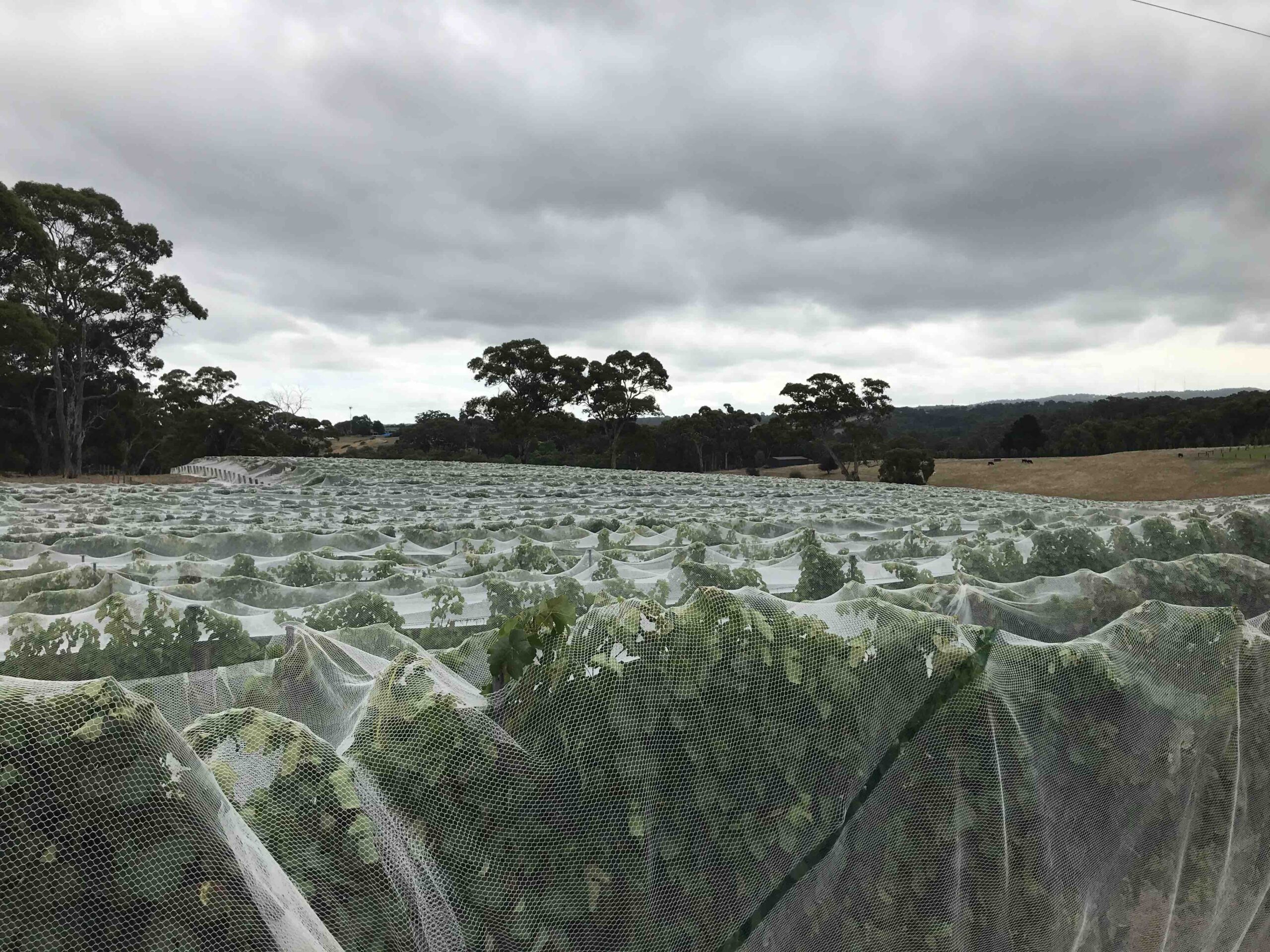
Vintage is near… Netted vineyards at Hahndorf Hill Winery. Photo: Oliver Budack

